Spring provides a fresh start. A rebirth, if you will. Warmer days and greening of the landscape tells me hatches are on the way. For my home waters and countless other trout streams across the country, the blue-winged olive hatch is one of the season’s first, but it’s also one that provides excellent fishing from the top of the river to the bottom. Not all hatches provide this full-column of opportunity—where trout actively feed on nymphs, then emergers, and finally adults. The early season black stone, for instance, which is found on my home waters during February, can provide consistent subsurface action but rarely, if ever, leads to the water’s surface boiling with rising trout. As a result, I seldom carry any small black stonefly dry flies during the winter months. For reasons unknown to me, some stages of the life cycle of certain bugs seem less important (or at least, of less interest) to trout, and thus to the fly fisher, than others. But the blue-winged olive (BWO) offers the fly fisher the trifecta effect—quality nymph, emerger, and dry fly opportunities.
Trout are masters of efficiency and will position themselves in the water column based on where the food is. Thus, their feeding behavior will often follow the blue-winged olive hatch as it moves through the tiny bugs’ life cycle. During the beginning of the hatch, trout will stay low in the water column eating BWO nymphs as they become active. Then, the fish will transition to a mid-column position as the nymphs emerge and move towards the water’s surface. Finally, as these insects break through the film to become winged adults (duns), trout will begin taking flies off the top.
It’s also worth noting that blue-winged olives often hatch during foul weather. I’ve had some of my best fishing during snow storms and damp, rainy days. The type of weather that gets me excited about fishing for blue-winged olives is the same weather that keeps 95% of anglers inside their homes, watching TV in their pajamas, and drinking a warm beverage. If you are headed to the water, and it’s shaping up to be a damp and dreary day, then my suggestion is to prepare for excellent blue-winged olive fishing.
Because BWO hatches are so commonly a full-column attraction for trout, it’s important to be prepared with flies that represent all three life stages—nymphs, emergers, and dries. Following are a few of my favorites—plus advice on when and how to fish them—to give you a template for fishing a blue-winged olive hatch.
Blue-winged Olive Perdigon Nymph
Blue-winged olives are smaller insects and so smaller nymph patterns are the best imitations. In order for a nymph imitation to be effective, it needs to get to the bottom. Generally, I try to avoid using split shot when nymphing. Split shot is a hassle to place on and take off your leader, and increases the chances of tangling your rig. But there’s only so much weight you can tie into a small pattern to aid in sinking the pattern to stream bottom.
The key to enabling almost any fly pattern to achieve quick depth is to create a fly with both density and a slim profile. This is why perdigon patterns are excellent for imitating blue winged olive nymphs. Even size 16 and 18 patterns tied in this style will drop fast towards the stream bottom without the need for split shot in most situations. A thin thread or quill body, covered with a UV resin or nail polish results in physical properties that allow the pattern to sink quickly to the riverbed—almost like a rock. This is the pattern you want during the beginning of the hatch, when blue winged olive nymphs first become active.
Puff Daddy CDC Emerger
This soft hackle-style pattern is a favorite emerger pattern I learned about years ago while fishing the South Holston River. CDC is used instead of hen hackle or partridge for the soft hackle collar. This pattern can be fished in the middle of the water column on a dead drift, or swung as a wet fly at the end of the presentation. The Puff Daddy can also be fished within the surface film to imitate an emerging dry fly. I often tie this pattern on a dropper tag (around 15-20 inches above my perdigon ) to imitate an emerging BWO positioned in the middle of the water column. This allows me to “kill two birds with one stone,” with a nymph near the stream bottom and an emerging insect in the middle of the water column.
Snowshoe Rabbit Emerger
Remember, blue-winged olives often hatch during the worst weather—weather such as snow and rain which create dampness. This dampness delays the time it takes for freshly a freshly hatched olive to dry its wings and fly away to safety. The greater the dampness in the air, the longer and more dangerous the ride each emerging BWO takes. This foul weather not only seems to encourage blue-winged olive hatches, it also enhances dry fly fishing opportunities by increasing the time the bugs have to linger on the surface before they can escape feeding trout. On those foul weather days, a pattern like the snowshoe rabbit emerger an excellent choice, as it can be used to effectively imitate an emerging olive struggling to fly off the water’s surface.
Though these are my favorite BWO patterns, it’s not essential that they become yours. What’s important is to remember that trout will adapt their feeding behavior and position based on the progression of the hatch. Having these three patterns (or similar alternatives), which imitate each of the BWO life stages, will allow you to cover all of your bases when fishing a blue winged olive hatch.




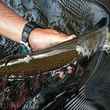
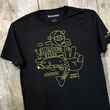

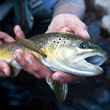



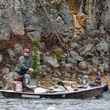
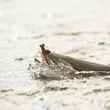



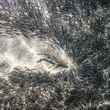
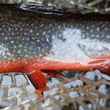




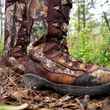



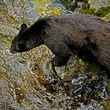
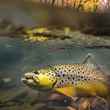
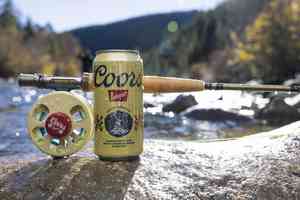

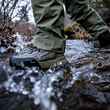
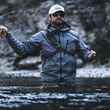
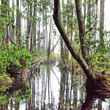
Comments
Charlie P replied on Permalink
How about some images for in article that is all about flies. Sheeeesh.
Pages